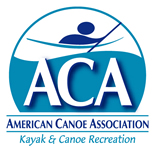“What are the standards for instructor certification?”
 We are often asked “What are the standards for instructor certification?” So we prepared the following Instructor Skills Checklist based on the form we use to evaluate instructors, using our best interpretation of current ACA instructor certification requirements. If you are interested in becoming a certified instructor (or simply a more precise and skilled paddler), the following information is designed help instructor candidates to prepare for their Instructor Development Workshops (IDW) and/or Certification Exams. All these skills will be covered and refined in the IDW, but the more prepared with the skills you are, the more you’ll be able to focus on how to teach these skills to your students.
We are often asked “What are the standards for instructor certification?” So we prepared the following Instructor Skills Checklist based on the form we use to evaluate instructors, using our best interpretation of current ACA instructor certification requirements. If you are interested in becoming a certified instructor (or simply a more precise and skilled paddler), the following information is designed help instructor candidates to prepare for their Instructor Development Workshops (IDW) and/or Certification Exams. All these skills will be covered and refined in the IDW, but the more prepared with the skills you are, the more you’ll be able to focus on how to teach these skills to your students.
ACA Instructor Skills Checklist & Recommended Resources
The six major areas of evaluation are:
- Strokes and Maneuvers
Now with videos! (recommended resources: Performance Sea Kayaking video by Kent Ford; Brent Reitz Forward Stroke Clinic video) - Rescues/Reentries & Rolls
(recommended resources: Performance Sea Kayaking video by Kent Ford; Sea Kayak Rescue by Roger Schumann and Jan Shriner) Teaching and Presentation Skills (*REQUIRED TEXT as of Jan. 1, 2006: ACA Instructor’s Manual with CD) - Trip Planning and Navigation
(recommended resources: Sea Kayak Navigation by David Birch) - On-Water Paddling Skills
(recommended resources: Surf Kayaking Fundamentals video by John Lull; get out on the water and practice; there’s no substitute for experience!) - Group Management and Safety On the Water
(recommended resources: there is no substitute for experience on this one. Sit in on classes with a local school if you are not teaching already.) - ACA “Savvy”
(recommended resources: ACA website, ACA Instructor’s Manual)
1. STROKES and MANEUVERS:
Requirement/standard: “Demonstration quality” modeling, i.e., the ability to teach these strokes using a step by step progression that emphasizes the key points to your students.
Key Points and Videos of the strokes and maneuvers can be found at this link
- Forward stroke
- Sweep strokes
- Draw strokes (standard “beam” draw & sculling draw)
- Low brace
- High brace
- Sculling brace
- Reverse stroke
Maneuvers
- Stern rudder
- Low-brace turn*
- Bow rudder*
- Side slip* (Hanging draw)
*Required teaching ability for Level 4 instructors
2. RESCUES/REENTRIES & ROLLS:
Requirements—Demonstrate solid, rough-water technique, emphasizing key points
(* “Teaching knowledge” required of the following 3 techniques. This means that you are comfortable teaching these skills using a step by step progression that emphasizes the key points to your students.)
PADDLEFLOAT: Keys—maintain hold of boat, keep limb on shaft and weight on float, “bomber” technique (2 minutes or less)
T-RESCUE: Keys—maneuvers quickly to bow, lifts w/ opposite hand using “cross-armed lift,” solid “pit-to-pit stabilization bow to stern, hang on to paddle and boat, “dry” boat (less than 2 knuckles of water in cockpit), good communication with partner, “bomber” technique (2 minutes or less)
SLING USE: Keys—efficient use of sling for both paddlefloat and T recovery
(Demonstrate ability to perform/demonstrate (but not teach) the following 6 recoveries):
- Cowboy Scramble (video)
- Reenter and Roll (w/ paddlefloat)
- Bow Recovery/Rescue
- Scoop
- Assisted T
- Reenter and pump
ROLLS
ACA Instructor Requirements:
Level 3: Coastal Kayaking instructor: 1 roll on flat water.
Level 4: Open Water instructor: 3 in a row on flat water to simulate ability to perform a “combat” roll; one of the 3 rolls should be from a non-setup position (video).
3. TEACHING/PRESENTATION SKILLS:
Ability to prepare and deliver an effective lesson, utilizing the following concepts:
Participation and Engagement:
- Participant involvement is KEY! Use questions and activities to engage your students
- Use of appropriate visual aids
- Good voice projection and group management
Organization:
- Clear, concise flow of material including: introduction, key points, summary of “take-home points
- Knowledge of topic shows depth of personal experience
- Ability to simplify and prioritize information for a beginner audience
Preparation:
- Use of written lesson plan/notes (to be turned in after presentation for ICE)
- Stay within given time allotment
Teaching experience: some actual experience teaching classes beyond the “friend” or “club” level is implied.
When teaching strokes and recoveries, gives student specific, positive feedback first, before critique.
Good general knowledge of kayaking: safety, gear, boat design; is “well read.”
4. TRIP PLANNING AND NAVIGATION:
Appropriate level of “teaching knowledge” to match level of certification
Basic Level instructor familiar with the concepts and can explain how each relates to their students, but does not require the level of practical knowledge and rough-water experience/skills that is required at the Open-Water level.)
BASIC LEVEL: teaching knowledge: Wind, weather, tides (ability to read tide book), currents, chart literate, boat traffic.
familiarity with: navigation: compass use, plotting a course, using ranges and ferrying.
OPEN-WATER: teaching knowledge: all of above plus: using current charts, taking fixes.
familiarity with: open water crossings using dead reckoning, using vector angles.
Navigation Presentation (ICE only): Shows depth of knowledge and personal experience.

 ACA Instructor Skills Checklist
ACA Instructor Skills Checklist